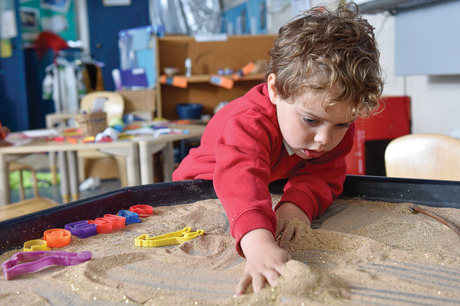their external senses, such as taste and touch, and their internal
senses of movement and body awareness. Anne O'Connor considers how these senses help to build understanding, when problems might arise, and how practitioners can make sure they are offering suitable environments

Although it is a subject that has been much debated we tend to think in terms of five main senses: sight, taste, touch, hearing and smell. These are our external senses that pick up information from the world outside us. However, most specialists in child development would now agree that there are two further internal senses that are hugely important. These are the vestibular and proprioceptive senses, though we can think of them more simply as the sense of movement and the sense of (internal) body awareness.

MULTI-SENSORY LIFE
Rarely do our senses work in isolation. Imagine you are in the park on a summer's day. Unless you have a sensory impairment, your eyes will probably see trees and grass and probably people. Your ears will be hearing the sounds of the birds and children playing. Your nose might be smelling cut grass, the scent of those trees, flowers and other vegetation, maybe even a hotdog seller or a barbecue. If you concentrate you can feel the fresh air against your skin; sit down and you will feel the bench under you or the grass on the ground.
Register now to continue reading
Thank you for visiting Nursery World and making use of our archive of more than 35,000 expert features, subject guides, case studies and policy updates. Why not register today and enjoy the following great benefits:
What's included
-
Free access to 4 subscriber-only articles per month
-
Unlimited access to news and opinion
-
Email newsletter providing activity ideas, best practice and breaking news
Already have an account? Sign in here









